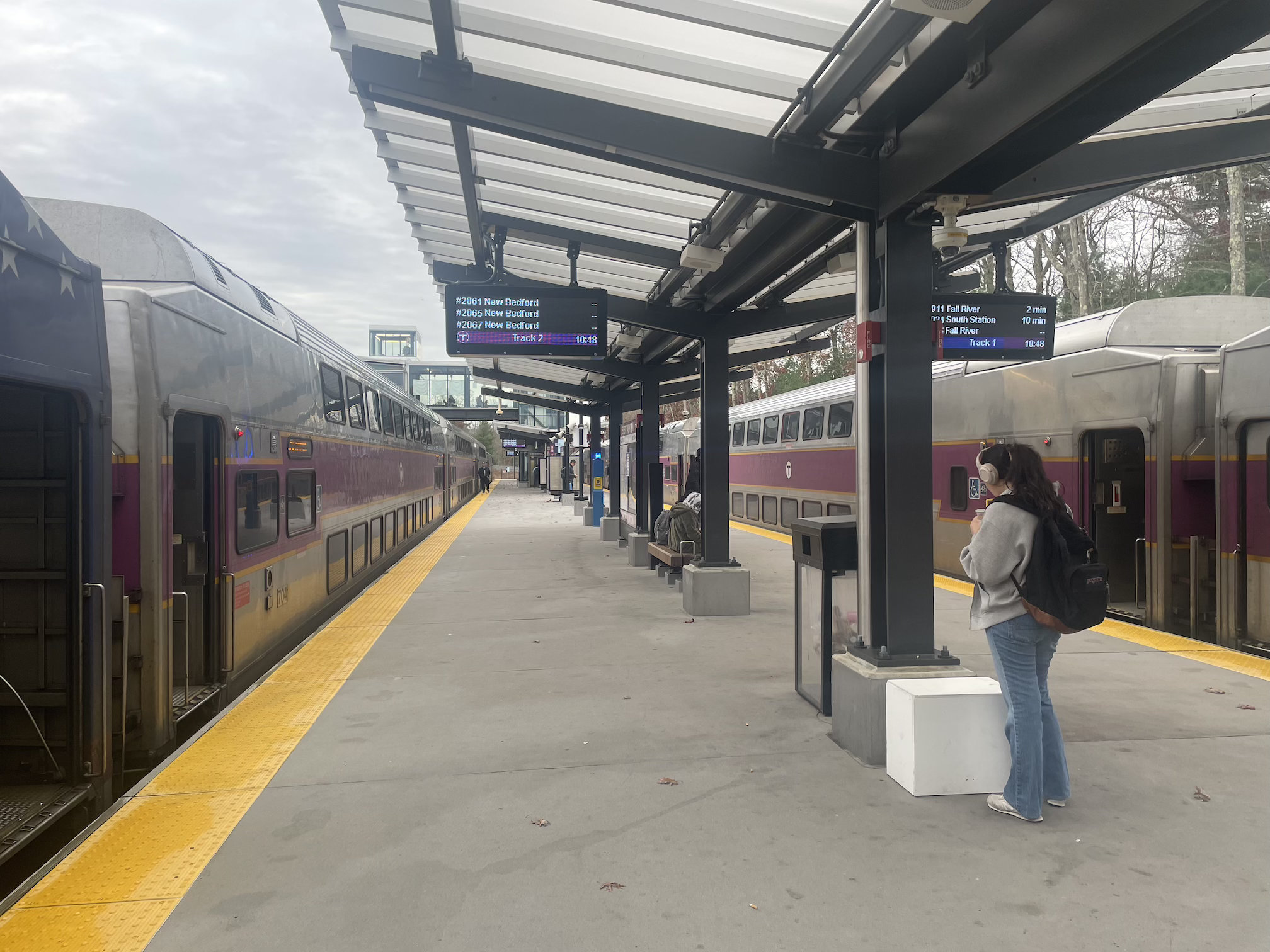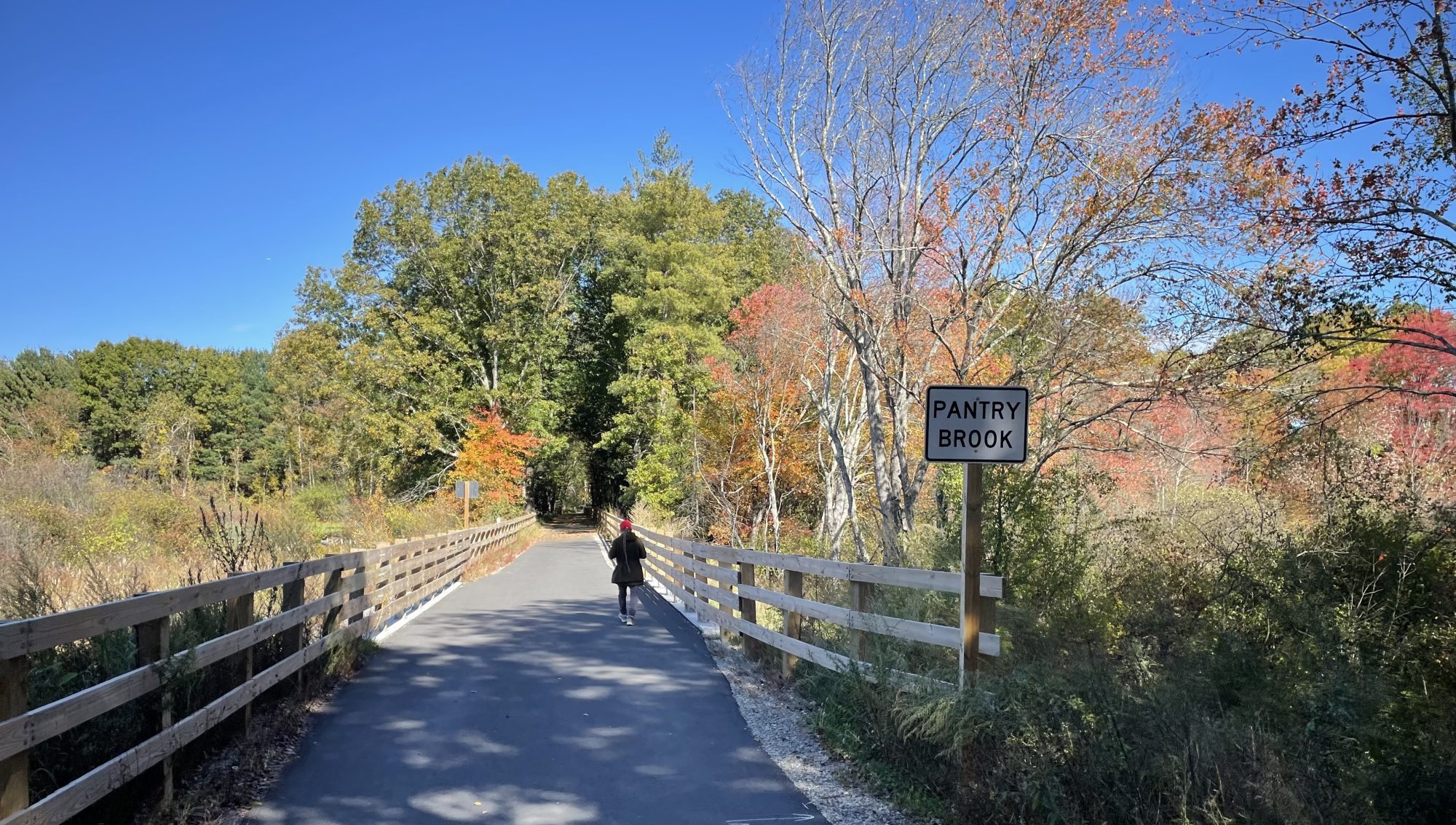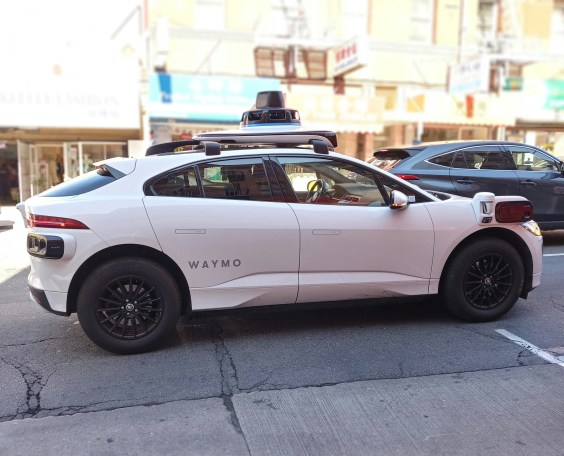One month into a 3-month pilot program to suspend fare collections on the MBTA’s Route 28 bus route, which serves Warren Street and Blue Hill Avenue in Roxbury and Mattapan, ridership has surged to pre-pandemic levels, and the route has re-claimed its title as the Commonwealth's busiest bus line.
Ridership on the 28 increased most dramatically after the fare-free pilot began on August 29.
In the last week of August, the 28 averaged 7,695 riders every weekday - roughly 64 percent of its pre-pandemic ridership.
But in the weeks immediately after fare collection ended, ridership climbed steeply, and plateaued around 11,000 trips per weekday - about 92 percent of the route's pre-pandemic average from September 2019.
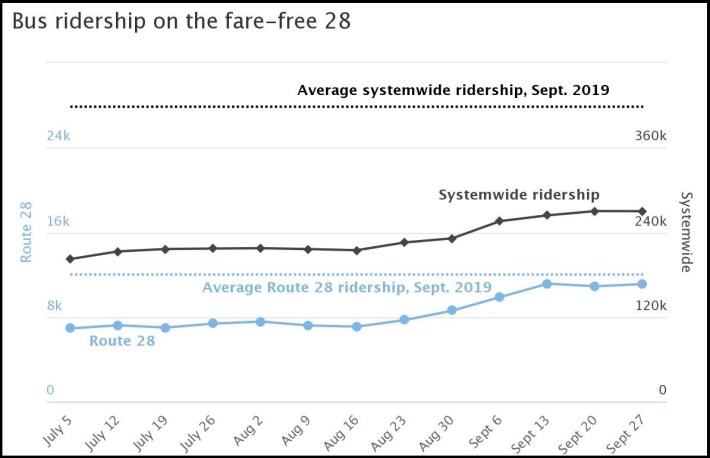
Ridership on the rest of the T's bus system has also increased, but not nearly to the same degree. During the last week of August, the bus network as a whole was attracting about 226,000 riders each weekday (about 55 percent of the system's pre-pandemic ridership); last week, there were an average of 270,000 riders per weekday (66 percent of pre-pandemic ridership).
On Tuesday morning, StreetsblogMASS spoke with some of the route's riders in Grove Hall.
Suze Dubque, riding towards Nubian Square, said that she rides the 28 on a near-daily basis.
"I'm saving my money," she said. "Sometimes I don't have the money to ride, but for these three months, I can ride every day."
Several other riders we spoke with said that while they're not personally benefiting from the pilot - one student already had a monthly T pass through her university, and several others said that their trips would still require a paid transfer to another route - they still support the effort.
"I only come this way (to Grove Hall) if I have to. It's not a trip I make often, so no, it's not really saving me much," said Annette Woodard, who lives near Nubian Square. "But it's a good program. People don't have a lot to spend, so of course it's helpful."
Officials from the City of Boston and from the MBTA said that they are aware of the increased ridership numbers, and agreed that the pilot is performing well so far.
Interestingly, ridership is also up on some of the other bus routes that use the same streets as the 28.
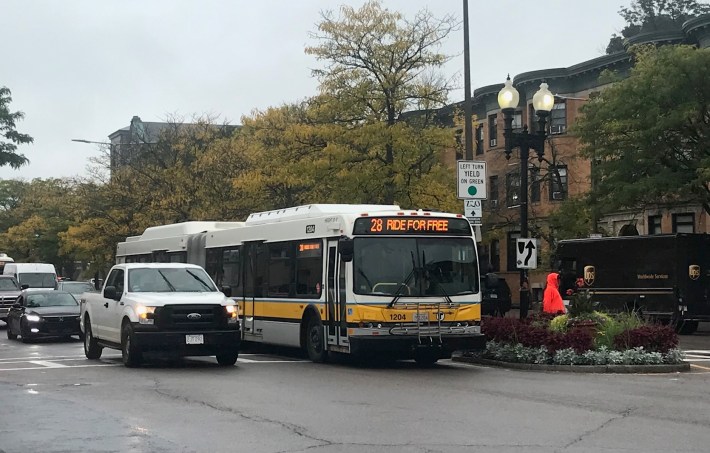
For instance, the 23 shares bus stops with the 28 along Warren Street from Nubian Square to Grove Hall, before it diverges east towards Ashmont.
One might expect that ridership on the 23 would dip while its competitor goes fare-free, but that hasn't been the case: at the end of August, the 23 was getting an average of 6,670 riders per weekday (61 percent of pre-pandemic ridership), and at the end of September, the line was getting 8,129 riders a day (74 percent of its pre-pandemic average).
And the 31, which shares Blue Hill Avenue with the 28 from Mattapan Square to Morton Street, where it heads northwest to connect to Forest Hills, also saw a jump in ridership during the past month, going from 63 percent of its pre-pandemic ridership at the end of August (3,381 riders a day) to 71 percent last week (3,770 riders a day).
Advocates of fare-free buses suggest that the 28 may also be faster now, because the pilot has eliminated the time that's otherwise wasted at bus stops while riders wait in line to tap their CharlieCards.
So far, though, there's only anecdotal evidence that that's the case (your correspondent did observe several riders skip the line to board through the rear doors and save his bus a little bit of time on a ride towards downtown on Tuesday morning).
Before the pilot ends, the T plans to conduct an analysis of the 28's run times to see whether, and how much, all-door boarding and the lack of fare collection might be contributing to faster trips along the route. The City of Boston will also conduct a survey of the program later this month to evaluate other performance benchmarks.
Both agencies told StreetsblogMASS that so far, there's been no discussion about continuing the pilot beyond this fall. Unless that changes, the 28 will start collecting fares again on November 30th.
Learn more about the pilot program at www.boston.gov/28bus.

